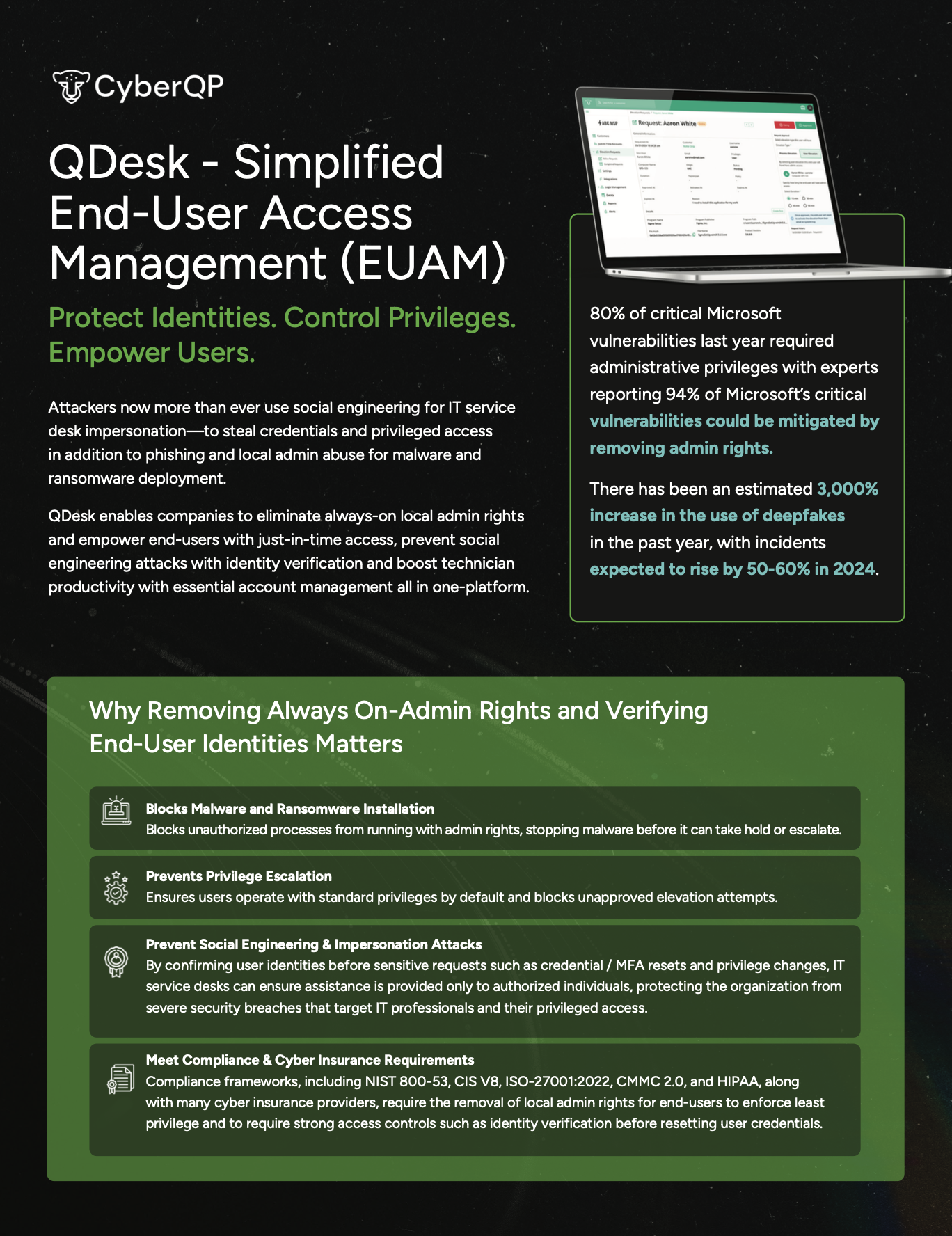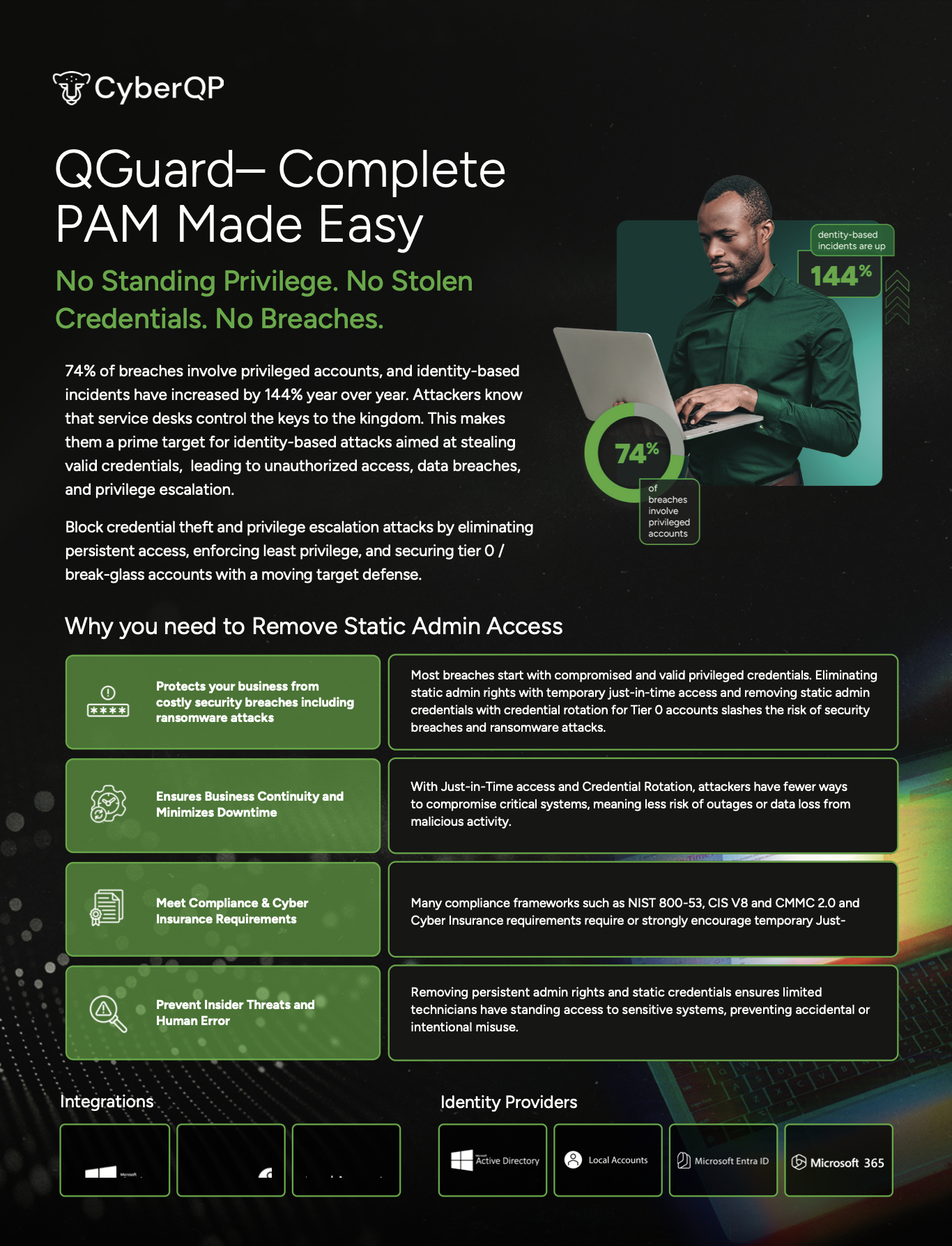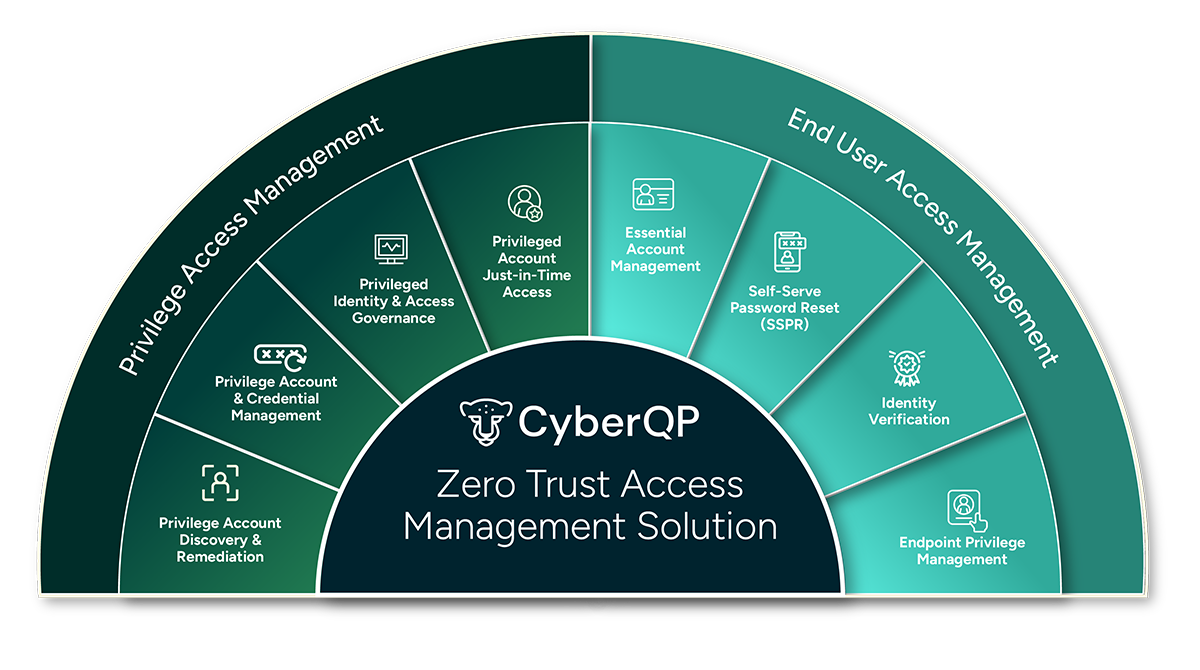Product Whitepapers
QDesk

QGuard

Stronger Security Starts with Zero Trust

CyberQP makes Zero Trust simple and effective. Our platform verifies every access request and enforces least privilege access, so users only get what they need, when they need it, nothing more.
With built-in tools like QGuard for secure, time-limited technician access and QDesk for smart end-user privilege management, CyberQP helps you reduce risk, stop ransomware, and block credential-based attacks before they start.
